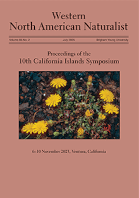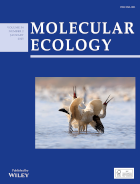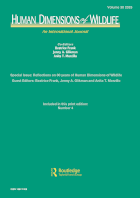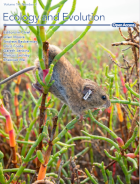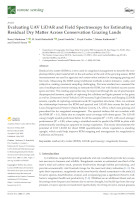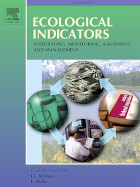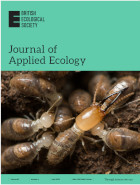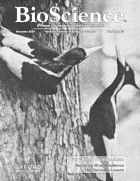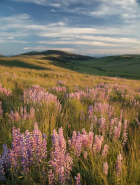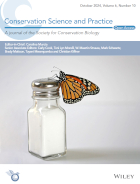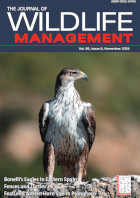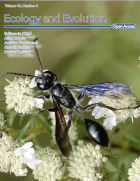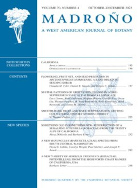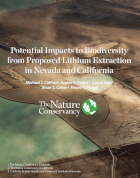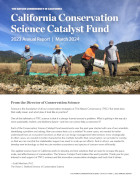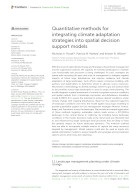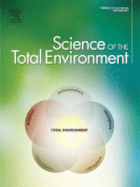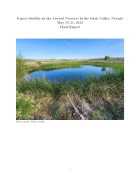In California, a day’s drive can take a visitor from record-setting desert heat to glaciated peaks to temperate rainforests with the world’s tallest trees. This astounding climatic and landscape diversity has helped create a biodiversity hotspot. California is also an economic hotspot – the 6th largest economy in the world – and is home to nearly 40 million people. The demand for land for new development and farms, along with accelerating climate change, puts tremendous stress on ecosystems, and the benefits they provide.
The state’s legacy of conservation has created a network of natural and working lands that benefit people by supplying clean water, capturing carbon, and directly contributing to the state’s economic and cultural vitality through recreation, tourism, and agricultural production. Conservancy scientists work across the spectrum of ecosystem types and human land uses, to advance conservation goals that also contribute to the well-being of people in those places.

Wildlands
Nearly half of California is protected in some land status that prevents most kinds of intensive…>>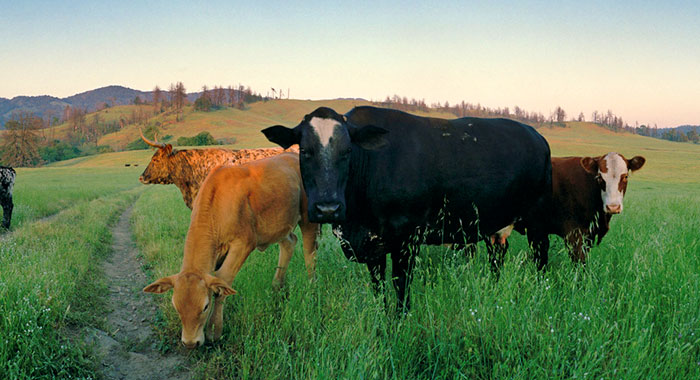
Harvested Landscapes
A third of California is privately-owned forestland, woodland or grassland. From redwood forests on…>>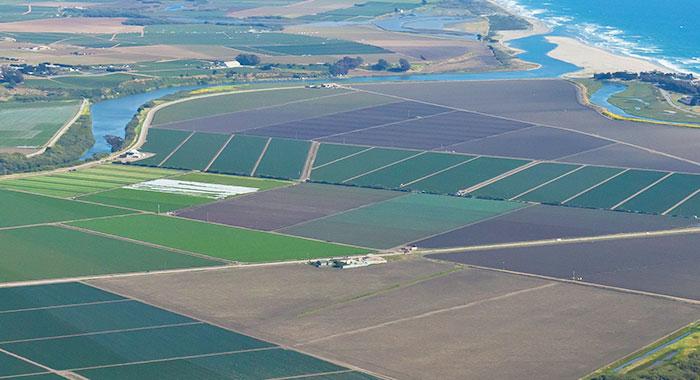
Cultivated Landscapes
California is the leading agricultural state in the country and it’s agriculture generates…>>
Urban Areas and Infrastructure
With California’s population on track to reach 50 million people, the demand for energy,…>>Science in Action
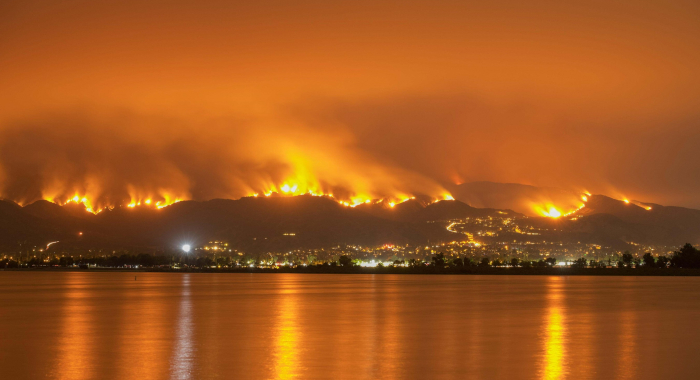
Terrestrial | Planning | Technology
Wildfire and Communities
How can land protection and restoration help protect communities from wildfire?

Terrestrial | Marine | Science
TNC and FEMA
How do we increase climate resilience in ways that work for people and nature?
2025 | Terrestrial | Technology | Publications & Reports
Real-time island biosecurity surveillance: evaluating a wireless camera network for AI-assisted early detection of invasive mammals on Santa Cruz Island, CA
Lara J. Brenner, Nathaniel Rindlaub, Juliana Matos, Scott Meyler, Sue Pollock, Falk Schuetzenmeister, Nick D. Holmes
Invasive mammals like rats pose a major threat to island ecosystems and endemic species. This study tests a wireless camera network on Santa Cruz Island that uses AI to detect nonnative mammals in…2025 | Terrestrial | Technology | Science | Publications & Reports
Phylosymbiosis and Elevated Cancer Risk in Genetically Depauperate Channel Island Foxes
Alexandra L. DeCandia, Jasmine Lu, Emily E. Hamblen, Lara J. Brenner, Julie L. King, Calypso N. Gagorik, Juliann T. Schamel, Stacy S. Baker, Francesca J. Ferrara, Melissa Booker, Andrew Bridges, Cesar Carrasco, Bridgett M. vonHoldt, Klaus-Peter Koepfli, Jesús E. Maldonado
Isolated island species may be more susceptible to disease because of their lack of genetic diversity. Santa Catalina Island foxes have the highest rate of cancer ever measured in wildlife - over 50%…2025 | Terrestrial | Planning | Science | Publications & Reports
The wildlife attitude-acceptability framework’s potential to inform human dimensions of wildlife science and practice
Alexander L. Metcalf, Elizabeth Covelli Metcalf, Lara J. Brenner, Holly K. Nesbitt, Conor N. Phelan, Michael S. Lewis, Justin A. Gude
The long-term survival of large carnivores like wolves, grizzly bears and mountain lions depends not just on ecological factors like habitat, but also on social factors like human acceptance of their…2025 | Terrestrial | Planning | Publications & Reports
Conservation planning for climate change vulnerability across the islands of the Californias
Lara J. Brenner, Piper D. Wallingford, Nick D. Holmes, John J. Knapp, John M. Randall, Scott A. Morrison
Island ecosystems are especially vulnerable to climate change, yet planning for these impacts remains challenging due to a lack of available data. This paper reports on a collaborative workshop across…2025 | Terrestrial | Technology | Science | Publications & Reports
The gut microbiomes of Channel Island foxes and island spotted skunks exhibit fine-scale differentiation across host species and island populations
Samantha Pasciullo Boychuck, Lara J. Brenner, Calypso N. Gagorik, Juliann T. Schamel, Stacy Baker, Elton Tran, Bridgett M. vonHoldt, Klaus-Peter Koepfli, Jesús E. Maldonado, Alexandra L. DeCandia
On California’s Channel Islands, two rare carnivores—the island fox and island spotted skunk—have coexisted for millennia despite competing for similar resources. This study explores…2025 | Terrestrial | Technology | Science | Publications & Reports
Evaluating UAV LiDAR and Field Spectroscopy for Estimating Residual Dry Matter Across Conservation Grazing Lands
Bruce Markman, H. Scott Butterfield, Janet Franklin, Lloyd Coulter, Moses Katkowski, and Dan Sousa
Residual dry matter has been widely used to monitor grazing impacts across conservation grazing lands for more than 75 years, largely done with time-intensive, expensive, and hard-to-reproduce…2025 | Freshwater | Terrestrial | Planning | Science | Publications & Reports
High streamflow enhances population growth rates for Bank Swallows
Golet G.H., Kristen E. Dybala, Joeseph G. Silvera, Adam Henderson, Jennifer Isola, David H. Wright, Ron Melcer Jr., and Danika Tsao.
Lowland alluvial rivers are rich in biodiversity, yet many are highly degraded and no longer support robust natural communities. Over the past few decades, Bank Swallows, which depend upon these…2025 | Terrestrial | Planning | Science | Publications & Reports
The Value of Community Science Data for Conservation Decision-making
A.D. Binley, J.O. Hanson, O.J. Robinson, G.H. Golet, J.R. Bennett
Monitoring biodiversity is critical for informing conservation but can also deplete resources available for management actions if the time and money available are limited. Freely available…2025 | Terrestrial | Planning | Science | Publications & Reports
Is our climate fight killing the environment? A case for smart from the start planning
Michael J Clifford, Peter Gower, Tanya Anderson, Jaina Moan, Mickey Hazelwood, Sophie S Parker, Laurel Saito
Dramatic changes to the transportation and energy sectors are required to reduce greenhouse gas emissions and meet the goal of keeping global average temperatures from rising. The authors discuss how…2025 | Terrestrial | Science | Publications & Reports
Oren Pollak Memorial Research Fund - 2025 RFP
The Oren Pollak Memorial Research Fund was established in 2000 in memory of Dr. Oren Pollak, a leading grassland ecologist and restoration pioneer, as well as an ardent champion and mentor for…2024 | Terrestrial | Planning | Science | Publications & Reports
An approach to designing efficient implementation of 30×30 terrestrial conservation commitments
Carrie A. Schloss, D. Richard Cameron, Bradley Franklin, Christoph Nolte, Scott A. Morrison
In response to biodiversity declines worldwide, over 190 nations committed to protect 30% of their lands and waters by 2030 . As these jurisdictions move from planning to implementation, we propose a…2024 | Freshwater | Terrestrial | Planning | Science | Publications & Reports
Maximizing the habitat value for shorebirds of private landowner incentive programs
Erin. E. Conlisk, Gregory H. Golet, Mark D. Reynolds, Nathan Elliot. and Matthew E. Reiter
Shorebirds are the second fastest declining group of birds in North America. To reverse this trend, The Nature Conservancy has been implementing BirdReturns, a habitat incentive program that pays…2024 | Terrestrial | Planning | Science | Publications & Reports
Climatically robust multiscale species distribution models to support pronghorn recovery in California
William T. Bean, H. Scott Butterfield, Jeanette K. Howard, Thomas J. Batter
In this paper, the authors used a variety of habitat suitability modeling approaches to begin to understand where pronghorn may exist in the future in California under different climate change…2024 | Terrestrial | Marine | Science | Publications & Reports
Spatial Patterns of Vegetation Change in a Fire-Suppressed Coastal California Landscape
Lucy Genua, Brad Anderson, Meghan Bowen, Genelle Ives, Owen Liu, Thomas Paschos, H. Scott Butterfield, Kelly Easterday, Mark Reynolds, James H. Thorne
In this paper, the authors used historical vegetation data, from both aerial photographs and field transects, to assess the change in major vegetation types at the Dangermond Preserve over the last…2024 | Freshwater | Terrestrial | Science | Publications & Reports
Potential Impacts to Biodiversity from Proposed Lithium Extraction in Nevada and California
Michael J. Clifford, Sophie S. Parker, Laurel Saito, Brian S. Cohen, Naomi S. Fraga
Lithium batteries are important for the clean energy transition in the United States because they are used in electric vehicles and for grid power storage. However, lithium extraction may have impacts…2024 | Freshwater | Terrestrial | Marine | Science | Publications & Reports
Conservation Science Catalyst Fund - 2023 Annual Report
The Nature Conservancy deploys science to help overcome major challenges facing people and nature. In today’s fast-paced world, turning threats to nature into opportunities for conservation…2024 | Terrestrial | Planning | Science | Publications & Reports
Quantitative methods for integrating climate adaptation strategies into spatial decision support models
Nicholas A. Povak, Patricia N. Manley, Kristen N. Wilson
This study presents a methodology to integrate spatial assessments of current and future forest conditions to understand the potential to achieve desired conditions under climate change with ongoing…2024 | Freshwater | Terrestrial | Publications & Reports
Potential impacts of proposed lithium extraction on biodiversity and conservation in the contiguous United States
Sophie S. Parker, Michael J. Clifford, Brian S. Cohen
To address climate change, the United States is incentivizing the production of electric vehicles containing domestically derived lithium batteries. Extracting this lithium may have environmental…2024 | Terrestrial | Science | Publications & Reports
Oren Pollak Memorial Research Fund - 2024 RFP
The Oren Pollak Memorial Research Fund was established in 2000 in memory of Dr. Oren Pollak, a leading grassland ecologist and restoration pioneer, as well as an ardent champion and mentor for…2024 | Freshwater | Terrestrial | Publications & Reports
Expert bioblitz on the Atwood Preserve
Michael Clifford, Sophie Parker, Matt Rader, Lydia Bailey, Naomi Fraga, Chris Hass, Estella Hernandez, Jan Kempf, Lois Merkler, Michael Swink
The Amargosa River supports one of the most outstanding suites of endemic and imperiled species in the world. In 2019, TNC acquired the Atwood Preserve in the river’s headwaters, the…
